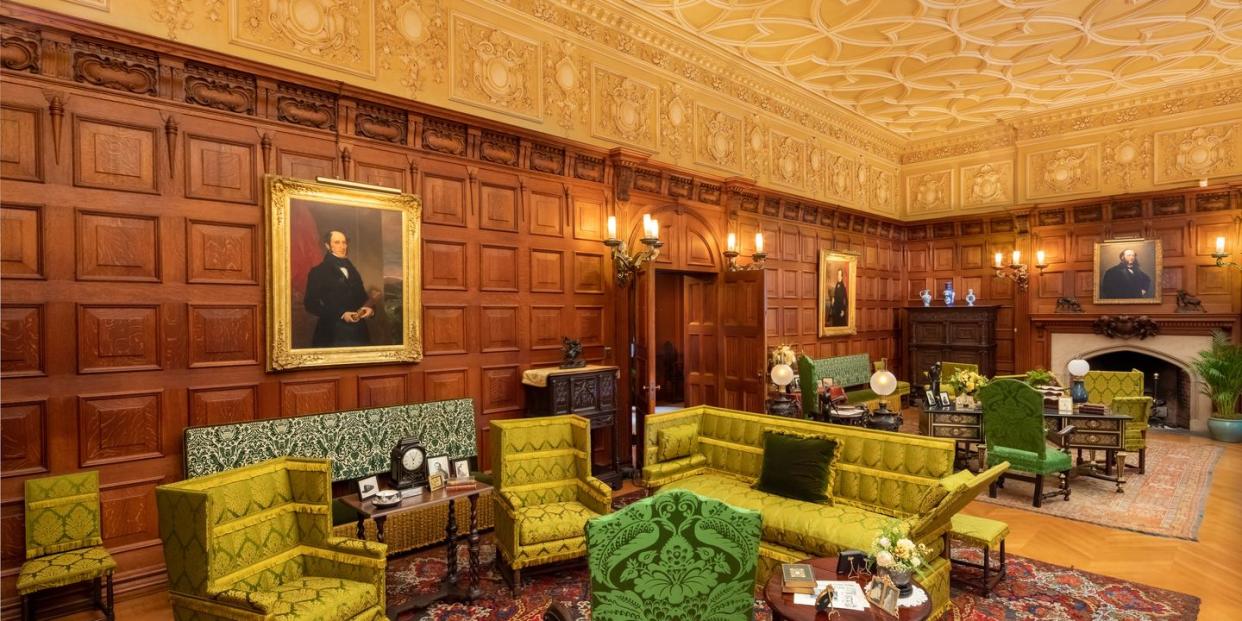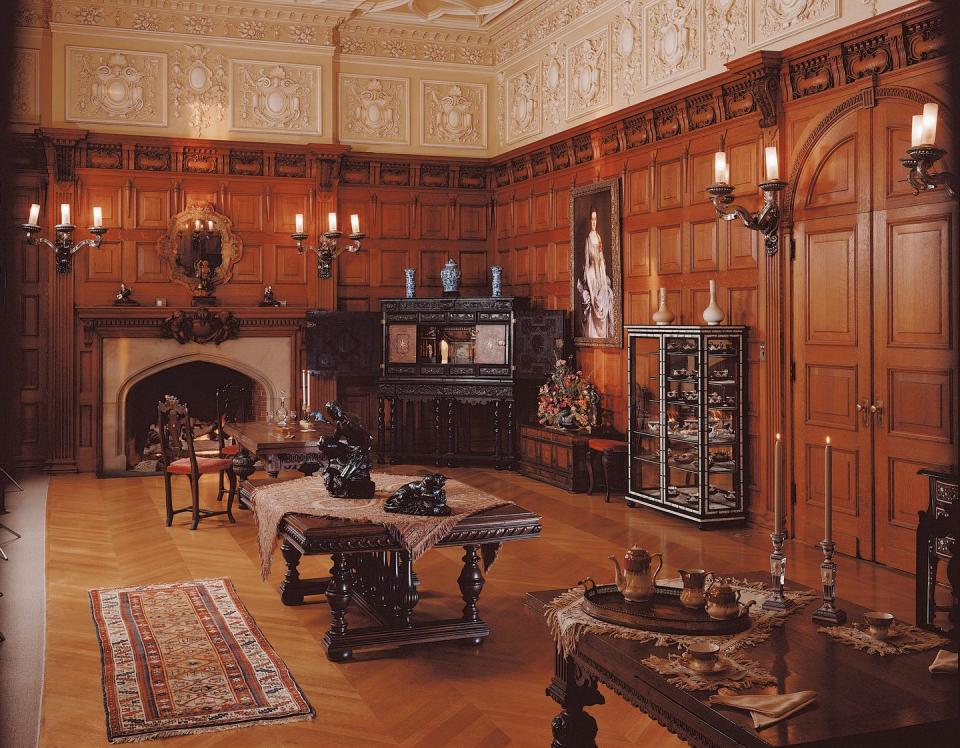The Biltmore Estate's Newly Restored Oak Sitting Room Is Worthy of the Vanderbilts Once More

- Oops!Something went wrong.Please try again later.
“Hearst Magazines and Verizon Media may earn commission or revenue on some items through the links below.”
They say good things take time, but waiting out the 15-year-long renovation of the Biltmore Estate’s Oak Sitting Room was trying for even the most patient historical preservationists. Thankfully, the space is now open to visitors for the first time since the project began in 2006—and it looks just as extravagant as it did over 100 years ago, when the Vanderbilt family called it home.
According to Lori Garst, the Biltmore’s associate curator, the Oak Sitting Room “was part of the family apartment in Biltmore House that served as a private sitting room for George and Edith Vanderbilt. During the Vanderbilt era [that is, 1895 to 1914], head housekeeper Emily King met with the Vanderbilts daily in this room to plan the day’s activities and meals.” She adds, “It served as one of the few private areas where the family would take time away from the responsibilities of hosting a house party or interacting with their guests.”
So, what was the reason behind the lengthy restoration? It turns out that the Oak Sitting Room “had not been furnished correctly since the Biltmore House opened in 1930," Garst tells House Beautiful. And this information only came to light after the discovery of a letter from 1902, in which a guest named Joseph Choate referred to the room as the "Rembrandt gallery." The revelation completely "transformed our view of the room and how it was used," says Garst.
Upon further research, Garst and her team learned that the Oak Sitting Room was where George Washington Vanderbilt III displayed beloved works from his personal art stash, which took approximately 20 years to amass. This includes "one of the finest collections of Old Master prints, particularly etchings made by Rembrandt van Rijn," says Garst. However, in 1906, financial hardship forced Vanderbilt to sell his Rembrandts to a fellow art lover (and member of another prominent industrialist family): J.P. Morgan. Today, those pieces are housed in the Morgan Library & Museum in New York City, but thanks to its staff, more than 30 of the etchings have been reproduced and presented in tabletop frames as part of the Oak Sitting Room’s restoration. “This will allow for study and more intimate viewing of the etchings, just as they were originally displayed” in this room, adds Garst.

Given the value of the room's contents, it should come as no surprise that the space remained mostly behind closed doors while the Vanderbilts resided here. It was essentially an “invitation-only” kind of space, says Garst, as it was “primarily reserved for family members and the Vanderbilts’ closest guests.”
Some of the other items that are now on display in the newly restored Oak Sitting Room—which is located between Mr. and Mrs. George Washington Vanderbilt III’s bedrooms—include several paintings of William Henry Vanderbilt (George Washington Vanderbilt III’s father) and other family members. The 17th century–style furniture, seen here in vibrant shades of green and gold damask, were “modeled after the famous settee in the Knole house, [a site that] George Washington Vanderbilt III fell in love with when he visited England in 1889,” reveals Garst. Silver-gilt filigree candelabras, bronze sculptures, a Boulle-style desk with brass inlay, and an ebony cabinet on a stand, which was made in a Paris workshop in the 1600s, round out the space.
If you need further proof that no detail was overlooked during the restoration process, consider the textiles. Traditional patterns were replicated based on letters, photographs, and other documents that were unearthed in the Biltmore’s archives. Garst says that “once a furnishing plan was created, fabric examples found in storage were reproduced, and our team of conservators began to repair and clean the furnishings to return them to their original appearance.”
Interested in seeing the newly restored Oak Sitting Room for yourself? You can purchase tour tickets here to visit the Biltmore Estate and live like the Vanderbilts—even if it's just for the day.
Follow House Beautiful on Instagram.
You Might Also Like

